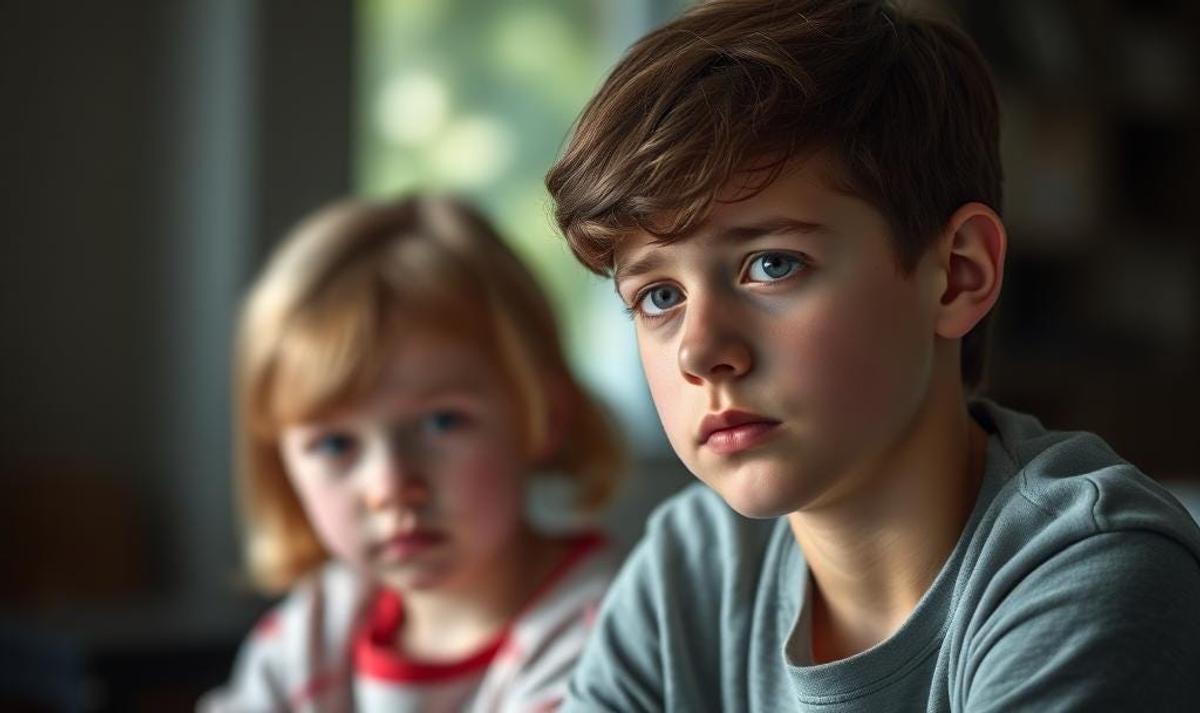Principal's Report
Kylie O'Donnell

Principal's Report
Kylie O'Donnell
Dear Parents and Carers,


Semester 1 student reports will be available on Compass from Friday afternoon. These reports offer valuable insights into your child’s progress and achievements so far this year. If you are unable to access Compass, please contact Melissa in the office, who will be happy to assist.
Teacher availability for parent–teacher meetings has now been published. We strongly encourage all families to make an appointment to speak with your child’s teacher. These meetings are a great opportunity to discuss your child’s learning and wellbeing, and to strengthen the partnership between home and school.
A quick reminder that the car line is running smoothly, thanks to everyone’s cooperation. To help keep things safe and efficient:
Please switch on your hazard lights as you enter the car line to alert other drivers that you will be stopping. Ensure your family surname is clearly displayed for any casual teachers who may be assisting with student pick-up.
I would also like to share some bittersweet news with our community. One of our wonderful teachers, Ms Bella Abruzzese, will be taking Long Service Leave in Semester 2 as she embarks on an exciting new adventure teaching at an international school in Rome, Italy. Bella is an exceptional educator whose warmth, professionalism, and deep care for her students have made a lasting impact at St Margaret Mary’s. She consistently models our school values in the way she engages with students, supports her colleagues, and builds strong, respectful relationships with families. While we will miss her dearly, we know this is a fantastic opportunity and we invite you to join us in wishing Bella all the very best for this next chapter.
Warm Regards,
Mrs O'Donnell
BY MICHAEL GROSE


Not all worry is anxiety, and knowing the difference is crucial.
As a parent, you’re wired to protect your child.
You want them to be happy, confident, and resilient.
You don’t want to see them struggle.
Even with something as innocuous as “butterflies in the tummy”, your internal alarm goes off.
Your breath shortens. Your shoulders tense. Your brow furrows.
You wonder, “Is this worry normal, or should I be concerned?” “How should I respond?”
How do you distinguish between normal childhood worries and something more significant – true anxiety that demands your attention and potentially, professional help?
It’s a question I get asked constantly, and for good reason.
Today, children are exposed to a diverse array of pressures.
Social media, academic expectations, even the news – it all contributes to a landscape where worry can easily take root.
But not all worry is anxiety, and knowing the difference is crucial. Anxiety left unchecked almost always rears its head at some stage. It may disappear after the anxiety-inducing event, but it will rise even stronger next time.
Critically, giving your child the tools and support they need to manage their anxiety is a significant investment in their future mental health and well-being.
Let’s explore the spectrum of worry, the tell-tale signs of anxiety, the three D’s that indicate it’s genuinely serious, and how to respond when it is.
Let’s go.
Let’s start by acknowledging that worry is a normal part of human development.
From the toddler who cries when you leave the room to the teenager fretting about their exams, children experience a spectrum of worries.
These are often healthy responses to new situations, challenges, or perceived threats. They learn coping skills, build resilience, and ultimately, grow.
Normal worries are:
Temporary and specific: They’re usually tied to a particular event (such as a new school, a performance, or a visit to the doctor) and subside once the event is over or the child adapts.
Mild in intensity: While they might cause some distress, they don't typically paralyse the child or significantly interfere with their daily life.
Managed with reassurance: A hug, some comforting words, or a practical solution can usually help the child regulate their emotions and move past the worry.
Developmentally appropriate: What’s normal for a five-year-old might be concerning for a ten-year-old. For example, a young child needing reassurance about separation is expected, but an older child showing extreme distress at brief separations could be a red flag.
However, when worry morphs into anxiety, it’s a different beast altogether.
Anxiety is an intense, persistent, and overwhelming feeling of apprehension or dread that goes beyond what’s typical for a child’s age and situation.
It’s when the "what ifs" become all-consuming, and your child struggles to switch off the worry circuit.


Recognising anxiety isn't always straightforward. It’s as individual as the children it afflicts.
It can be subtle. It can be dramatic. It can be anything in between.
Knowing your child helps, especially knowing what’s normal behaviour and what’s not.
Here are some key indicators that your child’s worry is more than a fleeting concern
Here are some key indicators that your child's worry might be more than just a fleeting concern:
1. Physical Symptoms
Anxiety almost always has a strong physical component. Watch for:
Frequent stomachaches or headaches, especially if there is no clear medical cause. These often appear before school, social events, or other anxiety-provoking situations.
Changes in sleep patterns: Difficulty falling asleep, frequent night awakenings, or nightmares.
Restlessness or fidgeting: An inability to sit still, constant movement, or nervous habits like nail-biting or hair-twirling.
Muscle tension or aches: Often in the neck, shoulders, or jaw.
Shortness of breath or rapid heartbeat: The "fight or flight" response kicks in.
Changes in appetite: Either overeating or a significant loss of appetite.
2. Behavioural Changes
Anxiety often shows itself through a child’s behaviour. Look for:
Avoidance: This is a hallmark of anxiety. Your child might refuse to go to school, avoid social situations, or shy away from new experiences that they once enjoyed.
Increased clinginess or separation anxiety: This is extremely common, even in older children. It manifests in various ways, including a sudden reluctance to be away from you, attention-seeking behaviour, or asking numerous questions.
Irritability, tantrums, or meltdowns: When feeling overwhelmed, children may struggle to regulate their emotions, leading to big emotional outbursts, ranging from “Woe is Me” to “I’m hopeless” type reactions.
Difficulty concentrating or focusing: An anxious mind can rarely settle on one thing. It always goes back to the source of worry, making study and concentration difficult.
Perfectionism or excessive self-criticism: A fear of making mistakes can drive anxious behaviour. There’s a strong link between perfectionism and anxiety, with the former heightened in an anxious moment.
Seeking constant reassurance: Repeatedly asking "Are you sure?" or "Will it be okay?" If you find yourself in a dance with your child where you feel you’re constantly reassuring them every five minutes, then it’s a sign that they are experiencing anxiety.
Social withdrawal: Pulling away from friends and activities they once enjoyed.
3. Emotional Indicators
Emotional signs are harder to spot, particularly among children who are adept at keeping their cards close to their chests. However, keep a lookout for:
Excessive and persistent worry: This occurs when the worry is disproportionate to the actual situation and is difficult for them to control.
Catastrophic thinking: Always jumping to the worst-case scenario - “This is going to be a disaster!”
Fear of making mistakes or being judged: Leading to a reluctance to participate.
Panic attacks: Sudden, intense bursts of fear accompanied by physical symptoms like rapid heart rate, sweating, and shortness of breath.
Generalised anxiety: Worrying about a wide range of everyday things without a specific trigger.
Excessive shyness or social anxiety: Fear of social situations and being judged by others.
Phobias: Intense, irrational fears of specific objects or situations (e.g., spiders, heights, storms).


Recognising the signs is the first step, but how do you know when it's genuinely serious and warrants professional intervention?
I use a simple framework I call the "Three D's":
1. Duration
How long has this been going on?
Normal worries are usually temporary. If the worrying behaviour or physical symptoms have been present for several weeks or months and aren't subsiding, it's a significant red flag.
Persistent anxiety isn't something a child can simply "grow out of" without support.
2. Distress
How much distress is it causing your child? Are they genuinely suffering? Are they tearful, agitated, irritable, or withdrawn for extended periods? Are they expressing feelings of overwhelming fear or sadness?
The level of emotional pain your child is experiencing is a crucial indicator.
3. Dysfunction
How much is it interfering with their daily life? Is it impacting their schooling, friendships, family life, or ability to participate in activities they once enjoyed? Are they avoiding situations that are developmentally appropriate?
If anxiety is causing significant disruption to their normal functioning, it’s a clear sign of a more serious issue.
If your child is experiencing one or more of these "Three D's" consistently, it’s time to take action.
First, it’s important to distinguish between your immediate response to a child’s anxiety and a long-term approach.
Responding to a child’s anxiety appropriately in the moment is different to managing it long-term.
I recommend a dual approach that helps you the parent or professional stay calm, while activating an anxiety response plan for an anxious child. You can learn about this approach in this recent newsletter.
1. Validate Their Anxiety
The worst thing you can do is dismiss their worries with "Don't be silly" or "There's nothing to worry about."
Instead, say, "I can see you're really worried about this," or "It sounds like you're feeling a bit scared."
Validation is the cornerstone of building trust and encouraging them to open up.
2. Be a Detective
Take a step back and observe their behaviour, listen to what they say (and don’t say), and try to understand the triggers and patterns of their anxiety.
Keep a diary if necessary. Stay rational. Think of your child in the third person, which helps you be more objective.
3. Offer Practical Support and Coping Strategies
Teach them calming techniques like deep breathing, mindfulness, or progressive muscle relaxation.
Encourage them to discuss their worries, draw them out, or write them down.
Help them break down overwhelming tasks into smaller, manageable steps.
4. Model Healthy Coping
Children learn by watching us. If you manage your own stress in healthy ways, they’re more likely to adopt similar strategies.
5. Limit Exposure to Triggers (Where Appropriate)
While we can't shield them from everything, we can manage their exposure to overly stimulating environments, excessive screen time, or certain news stories if they are clearly contributing to their anxiety.
6. Prioritise Sleep, Nutrition, and Exercise
These are the foundations of good mental health. Ensure they're getting enough quality sleep, a balanced diet, and regular physical activity. If you’re child has trouble sleeping, which goes hand in hand with anxiety, then plan your schedule around your child’s sleep routine.
7. Seek Professional Help
This is perhaps the most important step if the "Three D's" are present. Don't hesitate to consult your GP, who can then refer you to a child psychologist, therapist, or counsellor specialising in child anxiety.
A professional can assess the severity of the anxiety, diagnose any specific anxiety disorders (such as Generalised Anxiety Disorder, Separation Anxiety Disorder, Social Anxiety Disorder, or specific phobias), and develop a tailored treatment plan, often involving Cognitive Behavioural Therapy (CBT), or Acceptance and Commitment Therapy (ACT) which are highly effective for children.
Recognising true anxiety in your child is a challenging but critical parenting (and teaching) task.
It requires empathy, observation, and a willingness to seek help when needed.
By understanding the difference between normal worries and serious anxiety, and by acting decisively when the "Three D's" appear, you can equip your child with the tools they need to navigate their emotional landscape and build a foundation of resilience and well-being.
Remember, you’re not alone in this, and a wealth of support is available to help your child thrive.
Expert Tools for Successfully Managing Kids’ Anxiety: A Guide for Parents


This week’s Parenting Toolbox newsletter focuses on a significant issue: childhood anxiety. It’s a concern I’m regularly asked to address and one that parents (and teachers) need considerable support with.